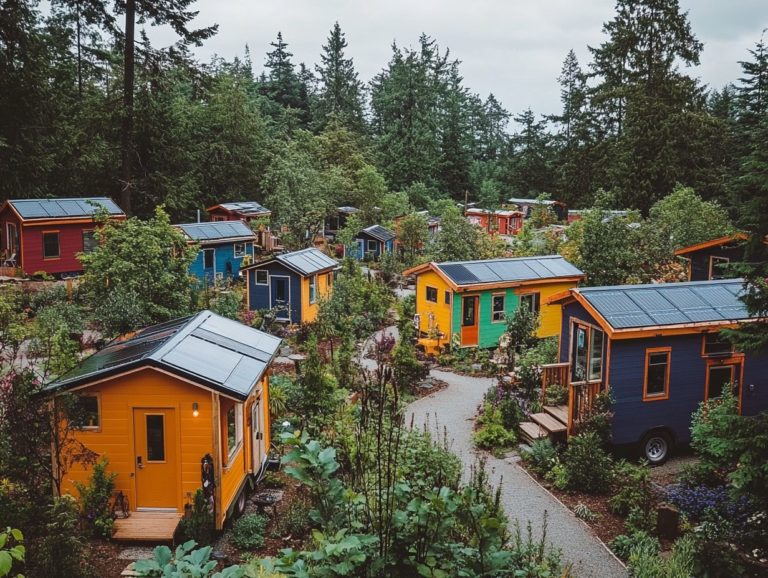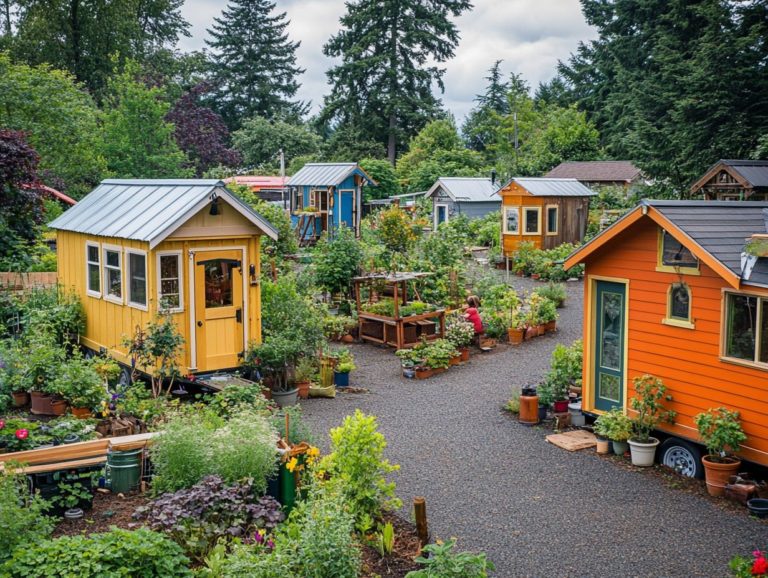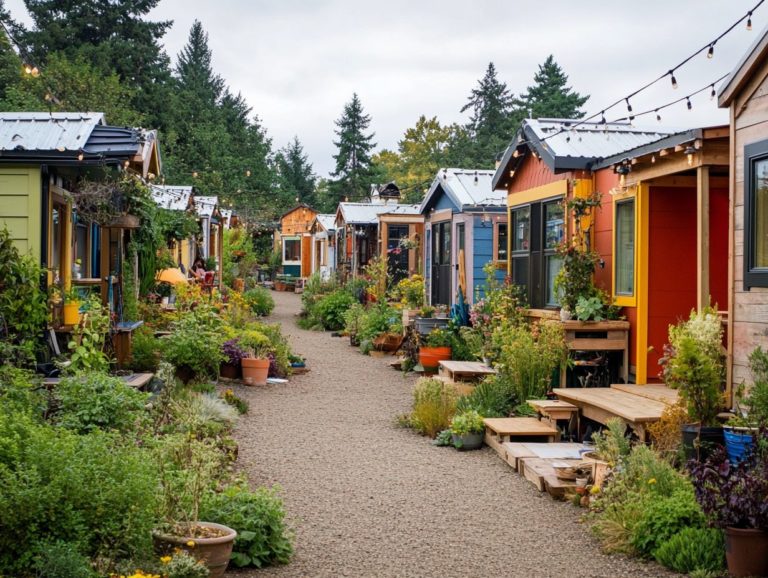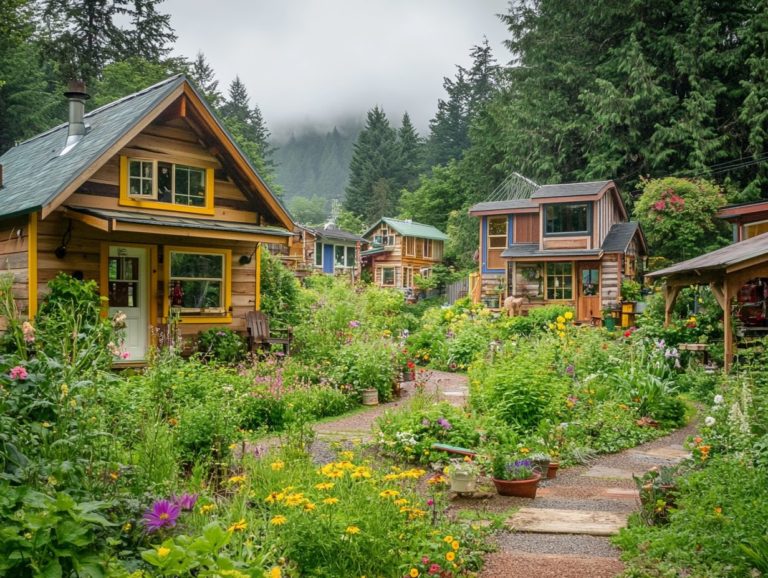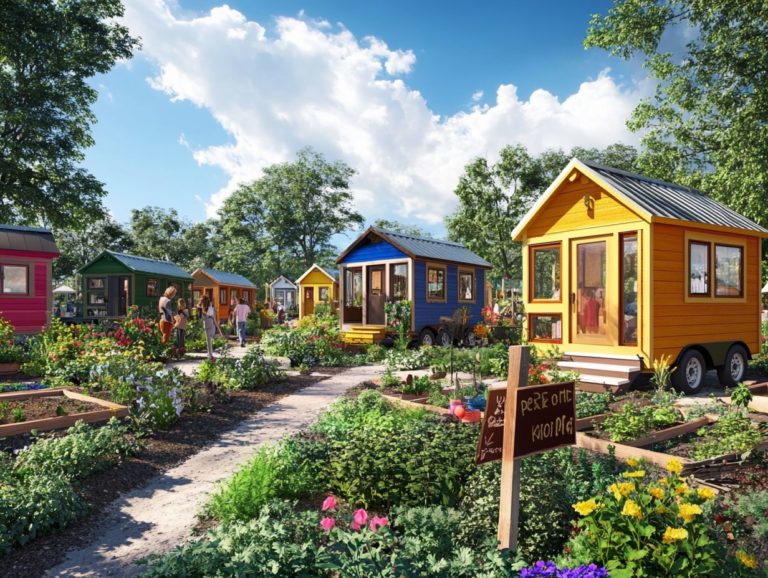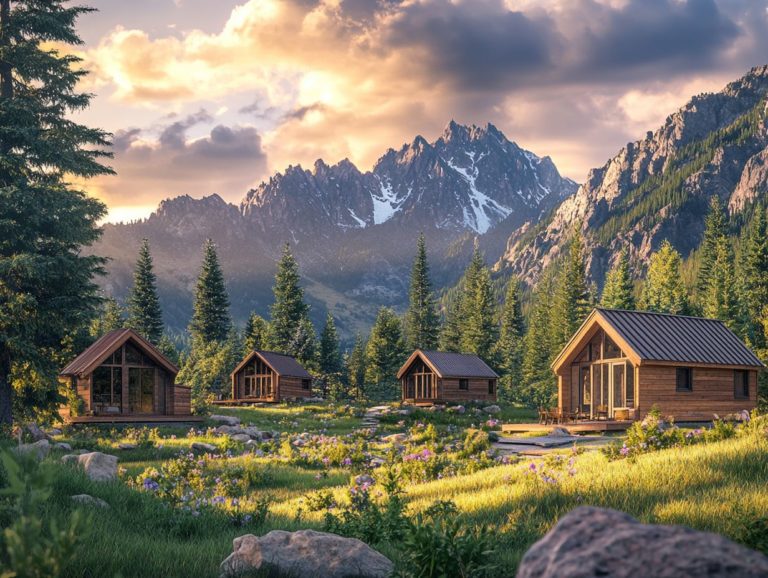The Culture of Tiny House Communities
Tiny house communities are not merely clusters of small homes; they embody a lifestyle choice deeply rooted in sustainability, minimalism, and connection.
As you explore alternatives to traditional living arrangements, these communities present a unique blend of shared values and connections between people that resonate with your desire for a more intentional lifestyle.
This article delves into what defines tiny house living, its undeniable appeal, the vibrant culture nurtured within these communities, the challenges residents encounter, and how you can either join an existing tiny house community or embark on the journey of starting your own.
Step into a world where simplicity and camaraderie go hand in hand!
Contents [hide]
- Key Takeaways:
- What are Tiny House Communities?
- The Appeal of Tiny House Living
- The Culture of Tiny House Communities
- Challenges and Solutions in Tiny House Communities
- How to Join or Start a Tiny House Community
- Frequently Asked Questions
- What is the culture of tiny house communities?
- How do tiny house communities promote sustainability?
- What are the benefits of living in a tiny house community?
- Are there rules and regulations in tiny house communities?
- How do tiny house communities foster a sense of community?
- Can anyone join a tiny house community?
Key Takeaways:
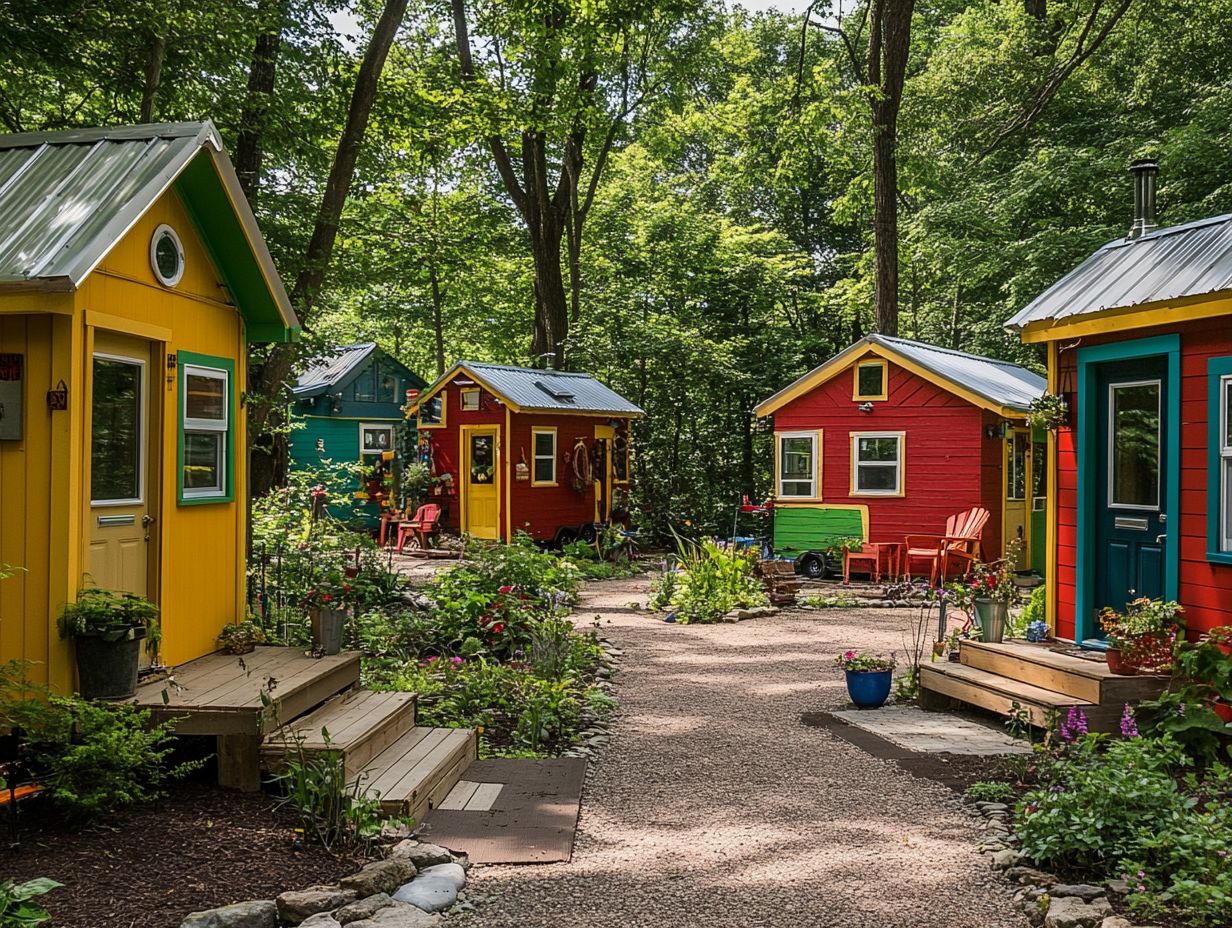
- Tiny house communities offer a sustainable and minimalist lifestyle.
- Living in tiny homes is a cost-effective choice with a smaller ecological footprint.
- Strong community ties are at the heart of tiny house living.
What are Tiny House Communities?
Tiny house communities embody a contemporary lifestyle choice that merges the thriving tiny house movement with good for the environment and sustainable living practices. You ll find a unique atmosphere of connection and collaboration among residents in these vibrant living spaces.
These communities feature a mix of tiny homes, eco-villages, and shared amenities that not only offer affordable housing options but also cultivate a strong sense of community and engagement, whether in rural or urban settings.
As you explore alternatives to the traditional housing market, the allure of tiny home living continues to expand, driven by a commitment to minimalism and environmental stewardship.
Defining the Concept
The idea of tiny house communities centers on crafting small, efficient living spaces that highlight minimalism and sustainability, often nestled within eco-villages that cultivate a robust community spirit.
These eco-villages transform into vibrant hubs where you can connect with others, sharing resources, knowledge, and experiences. Through communal gardens, shared tools, and cooperative housing arrangements, residents engage in a lifestyle that nurtures the environment while strengthening social bonds.
Living in these communities invites you to shift away from consumerism, emphasizing what is truly essential and fostering a mindset of intentional living. By embracing the principles of environmental stewardship, you demonstrate how collective efforts can significantly reduce ecological footprints, ultimately enhancing the well-being of both the community and the planet.
The Appeal of Tiny House Living
The allure of tiny house living captivates many, offering a wealth of benefits that beckon those seeking a sustainable lifestyle. You find yourself drawn to its affordability and the chance to immerse in outdoor activities, all while enjoying the warmth of a close-knit community that values connection and shared experiences.
More individuals and families are choosing tiny homes, enticed by their unique features. With eco-friendly designs and a minimized environmental footprint, these homes not only provide comfort but also allow for long-term stays in charming locales that double as vacation retreats.
This lifestyle enriches the local economy through active community engagement, making it a win-win for both you and the area around you.
Reasons for Choosing a Tiny House
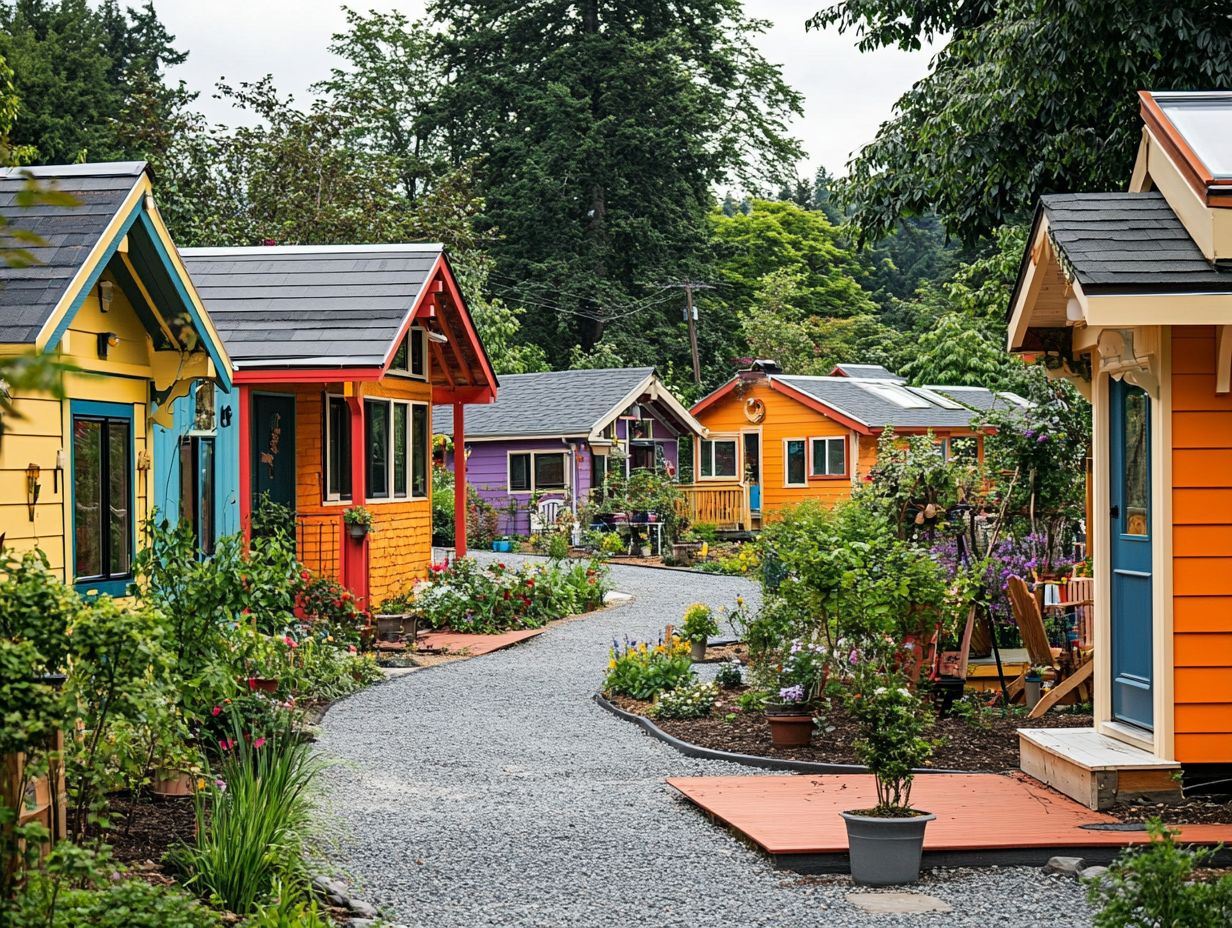
You might find yourself drawn to tiny houses for a multitude of reasons perhaps it’s the allure of affordable housing or the flexibility to work remotely.
The lifestyle’s embrace of minimalism also speaks to you, promising a more fulfilling and enriched life.
This trend is becoming popular as more individuals discover the many benefits of downsizing.
Downsizing can alleviate financial pressures and provide the freedom to pursue your passions.
Living in a smaller space often cultivates a strong sense of community, with many choosing shared amenities like communal gardens and outdoor areas that enhance social connections.
For those who love the outdoors, this lifestyle offers great access to nature and recreational activities.
It makes it easier to engage in hiking, biking, or simply enjoying the great outdoors.
These homes help you focus on what matters most, enabling you to prioritize experiences over accumulating material possessions.
The Culture of Tiny House Communities
The culture of tiny house communities embodies a vibrant sense of community spirit, where social interactions flourish in shared spaces.
Residents bring their diverse skills to the table, enriching the community well-being and engagement of the community.
Shared Values and Practices
Shared values and practices within tiny house communities often revolve around taking care of the environment, cultural opportunities, and the significance of social interaction.
This creates an atmosphere where you can truly thrive alongside your neighbors.
This collective mindset champions sustainable living and nurtures a distinct appreciation for nature and creativity.
You ll find residents actively engaging in community gardens, workshops, and events that celebrate local art, deepening their connection to both the land and one another.
These initiatives encourage teamwork and foster relationships based on mutual respect and understanding.
As individuals share their talents and skills, a rich tapestry of experiences unfolds, strengthening bonds and cultivating a profound sense of belonging that goes beyond mere proximity.
In this environment, friendships blossom and learning flourishes, elevating your community experience to extraordinary heights.
Building Community
The dynamics of tiny house communities thrive on the close-knit relationships that blossom among residents.
These relationships are nurtured by social interactions and the thoughtful design of shared amenities that draw people together.
These communal spaces think kitchens, gardens, and gathering areas are more than just functional; they act as vibrant catalysts for collaboration and connection.
You ll dive into exciting conversations, whether while sharing a meal or participating in community events, fostering a profound sense of belonging.
This collective experience not only cultivates friendships but also creates a supportive atmosphere where you feel valued and interconnected with others.
As these interactions deepen, they enrich the community spirit, encouraging you to engage in group initiatives, lend a helping hand to neighbors, and contribute to a thriving, engaged neighborhood.
Challenges and Solutions in Tiny House Communities
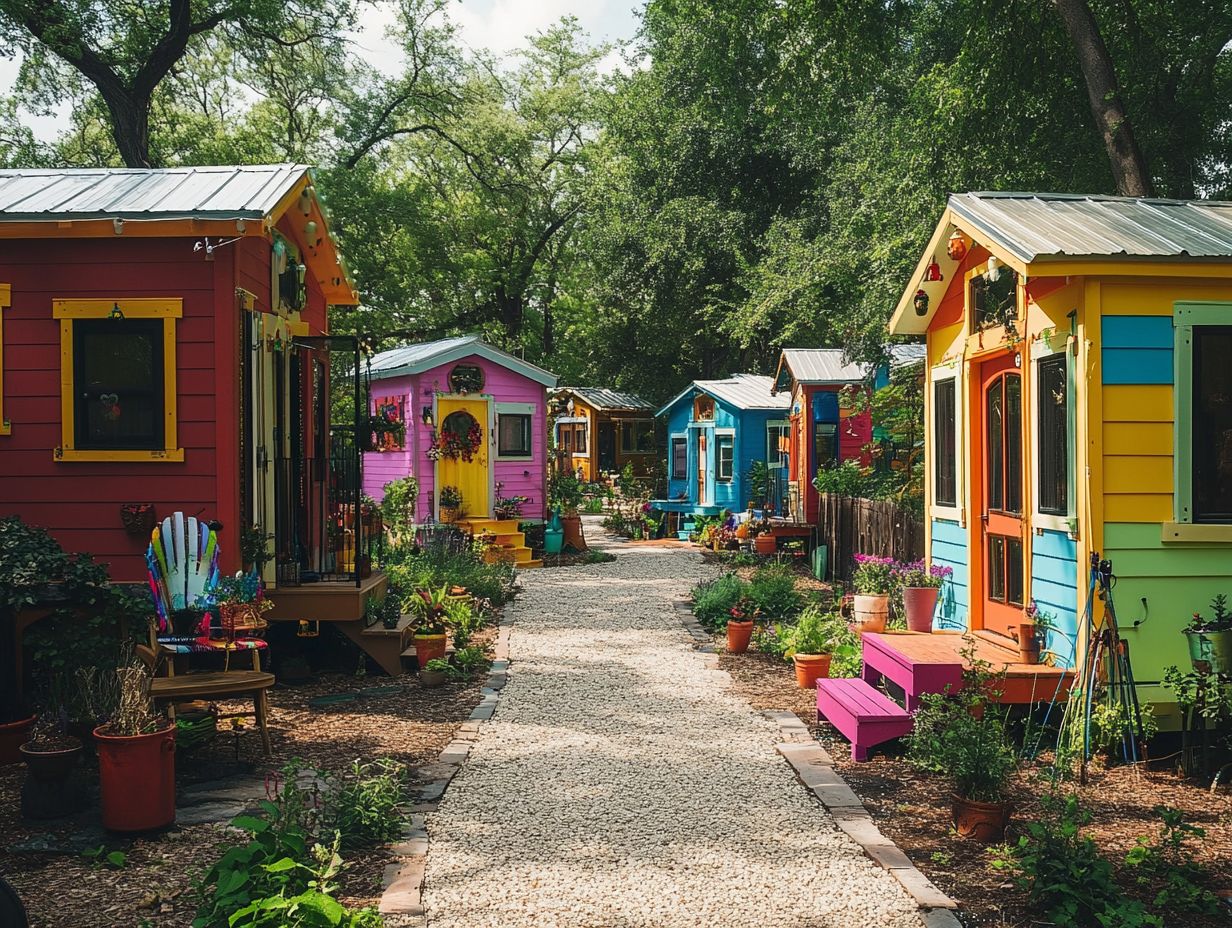
While tiny house communities provide a wealth of advantages, they also come with their own set of challenges that you ll need to navigate.
These include zoning regulations rules about where you can place tiny houses that can be tricky to understand, financing issues that may require creative solutions, and the need for long-term stays that fit your work-from-home lifestyle.
Common Obstacles and How to Overcome Them
Common obstacles in tiny house communities often include zoning regulations and financing issues that can impede the development of shared amenities and overall community engagement.
These issues create substantial barriers, hindering the creation of a cohesive living environment where residents can truly thrive. Zoning laws control how land can be used, affecting where tiny houses can be placed, and financing options tend to be limited, discouraging prospective buyers.
To overcome these challenges, you and other residents can collaborate to advocate for more flexible zoning regulations and explore innovative financing solutions, like cooperatives or community-supported lending.
Talk to local governments and community organizations to create a supportive network that values small living initiatives, ultimately reinforcing the sense of connection and collaboration essential for these communities to prosper.
How to Join or Start a Tiny House Community
Joining or starting a tiny house community entails several essential steps that demand thoughtful planning and collaboration. This approach ensures that the community design is effective and that residents have access to local amenities tailored to their needs.
Steps to Getting Involved
Kickstart your exciting journey by attending community meetings and events, such as those in Cedar Springs, Ohio or Acony Bell, North Carolina, where you can connect with fellow residents and grasp the unique needs and concerns of the group.
You can enhance your experience by sharing resources, whether through skill-sharing workshops highlighting local tiny home rentals or communal gardening initiatives that promote sustainable living. These activities not only strengthen your bonds with others but also promote sustainability.
Take the time to explore local amenities such as nearby markets, including local farmers’ markets that support the local economy, educational institutions that may offer courses on minimalism and environmental stewardship, and recreational areas that provide access to nature trails and outdoor activities to enrich the overall quality of life in the community.
By actively participating in local initiatives and supporting small businesses that offer vacation retreats and other unique features, you can play a pivotal role in cultivating a vibrant, interconnected neighborhood that truly values collaboration and mutual support, fostering a strong community spirit in neighborhoods that embrace the tiny house movement. Understanding the importance of sustainability in tiny house communities can further enhance these efforts.
Frequently Asked Questions
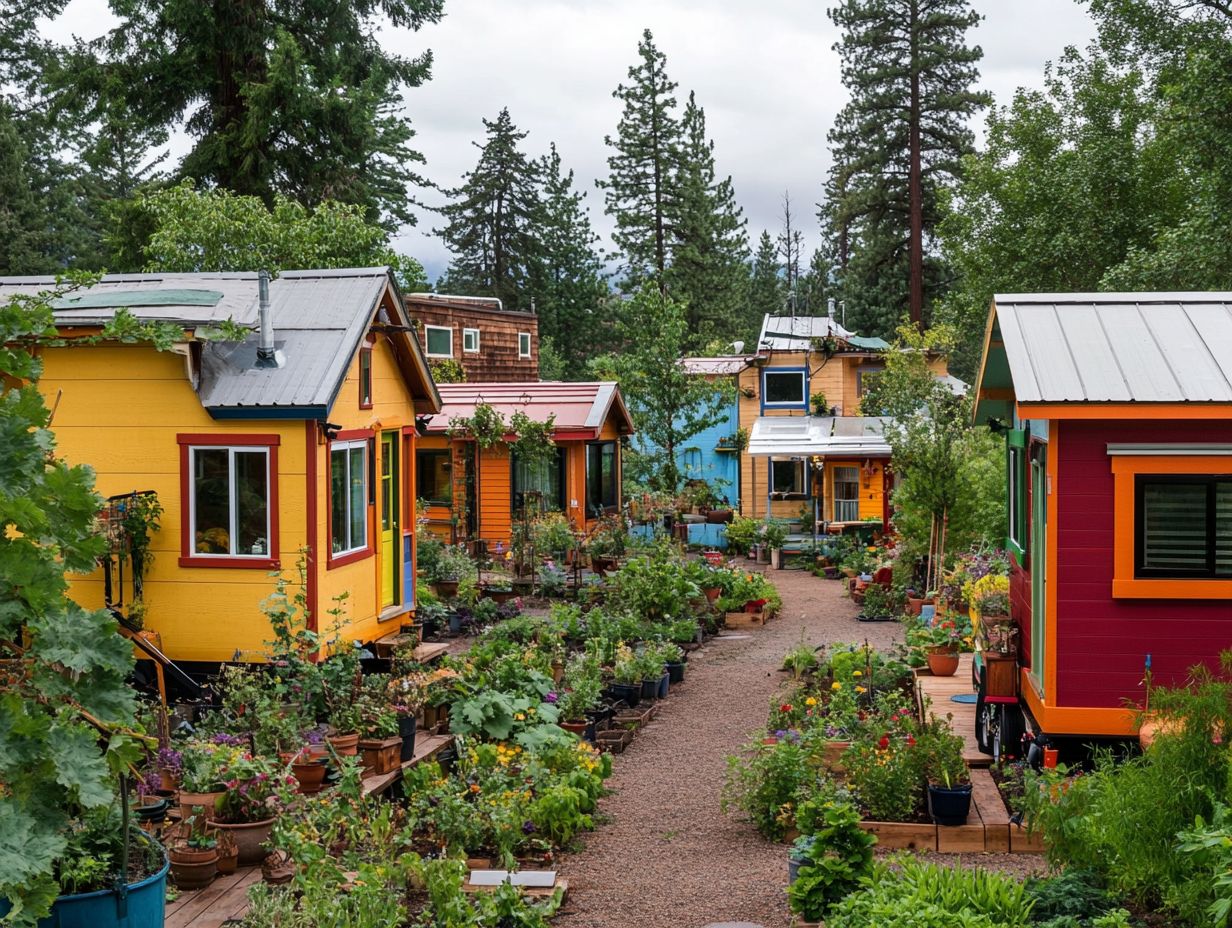
What is the culture of tiny house communities?
The culture of tiny house communities is centered around minimalism, sustainability, and community living. It involves living in a small, often self-built home and sharing communal spaces with other tiny house dwellers.
How do tiny house communities promote sustainability?
Tiny house communities promote sustainability through their focus on small living spaces and use of eco-friendly materials. They often have shared resources, such as composting systems and community gardens, to reduce their environmental impact.
What are the benefits of living in a tiny house community?
Living in a tiny house community offers a sense of belonging and support from like-minded individuals. It also allows for financial freedom, reduced carbon footprint, and a simpler way of life.
Are there rules and regulations in tiny house communities?
Yes, most tiny house communities have rules and regulations in place to ensure the safety and well-being of all residents. These may include guidelines for shared spaces, noise levels, and visitor policies.
How do tiny house communities foster a sense of community?
Tiny house communities often have shared spaces, such as community gardens, fire pits, and communal kitchens, where residents can gather and interact. They also organize events and activities to encourage socializing and building relationships.
Can anyone join a tiny house community?
Some tiny house communities, like Circle Pond Tiny Community and Bluegrass Tiny Ridge in Kentucky, have specific membership requirements.
They often welcome those who share their values and want to stay longer while following community guidelines. Join a tiny house community today!

